
The Anna Akhmatova Museum is a memorial museum located in an apartment in St. Petersburg, where the poetess lived for about 30 years.
The museum includes a memorial apartment and a literary and historical exposition.
The Anna Akhmatova Museum is located in the Southern Wing of the Sheremetyevo Palace, which is also called the Fountain House, since it is located near the Fontanka River.
The Sheremetyevo Palace (the Sheremetyevo Palace) is the former estate of the Counts of Sheremetyevo and one of the palaces of St. Petersburg.
The palace is almost the same age as the city, its history dates back to 1712, when a plot of land along the Fontanka River was granted by Peter I to Field Marshal Count Boris Petrovich Sheremetev for the construction of a manor.
Today, you can visit permanent expositions within the walls of the palace: the exposition "enfilade of state halls" and the exposition of musical instruments "open funds of the museum".
The palace also hosts excursions, concerts, exhibitions, lectures, seminars, festivals and other events. Classical music concerts are held in the White Hall of the Palace. More about the Sheremetyevo Palace and the museum in the Palace…
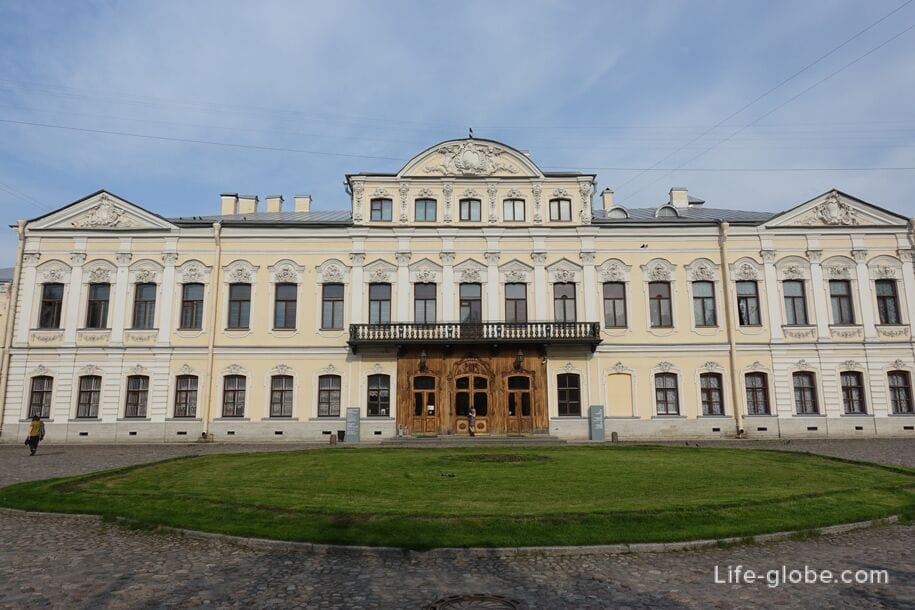
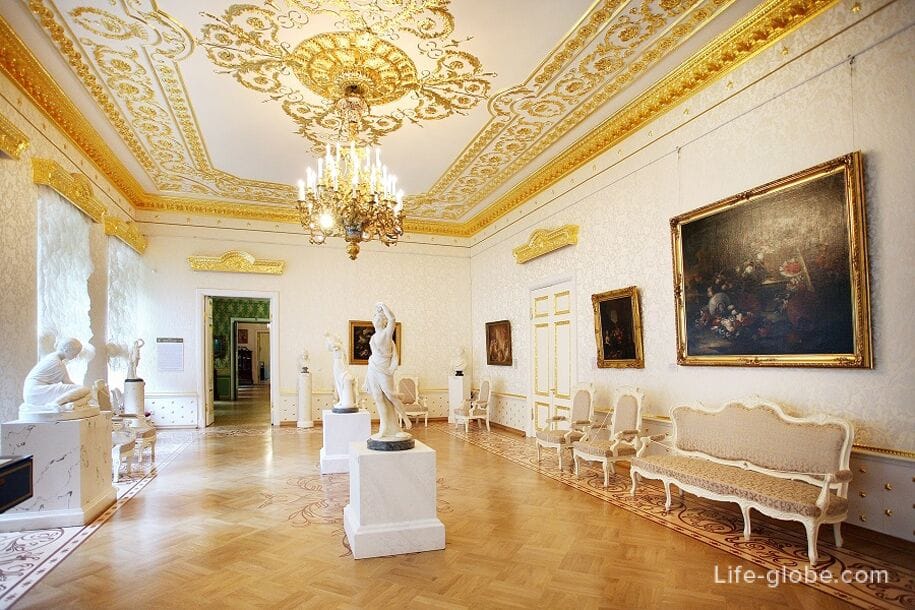
For more than 30 years (until 1952), the Russian poet of the Silver Age Anna Andreevna Akhmatova lived in the garden wing of the palace complex.
In 1989, on the occasion of the 100th anniversary of the birth of the poetess, the Literary and Memorial Museum of A. A. Akhmatova was opened in the southern wing of the Sheremetyevo Palace.
The museum still functions today under the name Anna Akhmatova Museum in the Fountain House, in which you can visit the memorial apartment of the Punins-Akhmatova with the appearance of the 1920s-1940s of the 20th century, and the literary and historical exposition located next to the apartment space.
The staircase, which is tiled from the 19th century and leads to several rooms on the 2nd and 3rd floors, where the Anna Akhmatova Museum is located.
On the landing of the third floor there is a door leading to the apartment at number 44, which in 1922 was provided as official housing to an employee of the museum department, Nikolai Nikolaevich Punin (the third husband of Anna Akhmatova).
Anna Akhmatova has lived in this apartment for almost 30 years.

An entrance hall, which is made and has the atmosphere of a typical entrance hall of an apartment of St. Petersburg-Leningrad intellectuals. Here: a tiled stove, a hanger, a chest, bags, an umbrella stand, a high mirror.
Between the hallway and the kitchen, in a dark passage, there was a photo lab of Punin, who in the mid-1920s became interested in photography - he developed and printed pictures himself.
"On a large table in the kitchen, he collected everything he needed: large and small baths, various powders, boxes with something special, bundles of paper packed in black envelopes, a flashlight with red glass, with which the main actions took place. At this time, the lights were turned off in the neighboring rooms and the bulbs were unscrewed to guarantee it, " Irina Punina recalled.

Kitchen, corridor. In the early 1920s, the apartment maintained a warm homely atmosphere: a wood-burning stove, a large wooden table, walkways above it, and an icon in the corner.
Annushka - Anna Bogdanovna Smirnova, the Punins ' housekeeper, was the hostess here.
In the early 1930s, the apartment became communal: Annushka's son Eugene and his wife Tatiana won the right to a room in the Punins ' apartment. In 1938, Tatyana Smirnova already had two children-Valya and Volodya.
"Our apartment has become cold, communal, with the exit of all the doors no longer into the suite, as it was at first, but into the corridor. The corridor became cold, and Anna Andreevna put on a fur coat to answer the phone, "Irina Punina recalled:" Life became more complicated, it became harder and harder to get firewood, food cards were introduced, free trade was reduced, queues for kerosene and everything necessary began to appear."
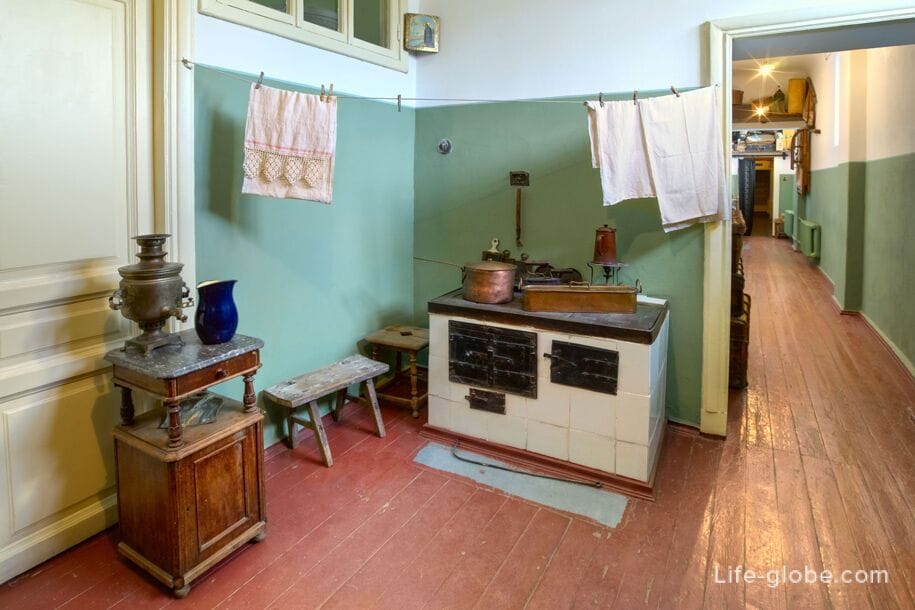
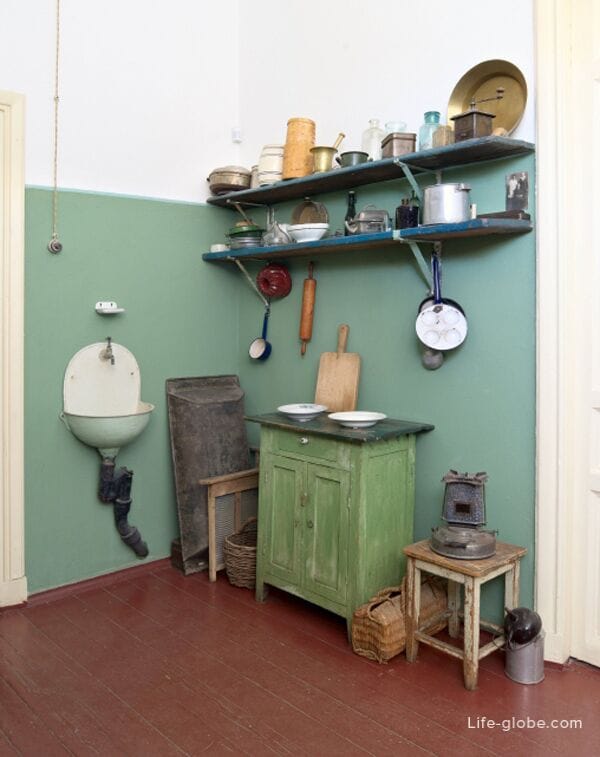
Punin's office. A typical office of a person working at a desk: manuscripts, books, a comfortable chair. On the walls are drawings by artists-friends of Nikolai Punin.
Punin himself spoke about himself: "I, in fact, have only one, but a real gift: I can understand painting and I can reveal it to others."

The dining room is a room that was the center of the apartment in the 1920s and 1930s. Here they played chess, got a gramophone, and received friends.
The house celebrated those holidays to which the owners were accustomed from childhood: Christmas, Easter, name days. The Christmas tree was installed even when it was banned as a "bourgeois" and "anti-Soviet" custom. In order not to attract the attention of random passers-by, a festive tree was placed between the windows.
"...the Christmas tree has always been beautifully decorated. ... After 1927, wonderful lanterns appeared on the Christmas tree from Japanese paper, which dad glued together with us" (from the memoirs of Irina Punina).
In the corner hung an icon of the Kazan Mother of God, which one day the young Ira Punina, stuffed with Soviet agitprop, demanded to be removed. To which the father ironically remarked: "You are like the party committee of the Krasny Nailer factory.
In 1938, after a difficult break with Punin, Akhmatova moved to live in the next room (the former nursery) and stopped going out to the common table.
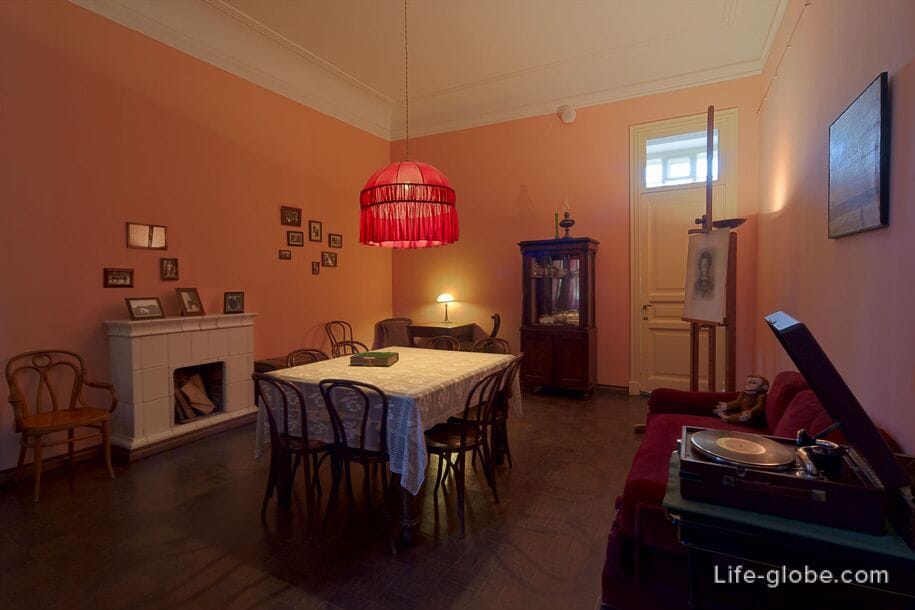
Anna Akhmatova's room, 1940. After parting with Punin, Anna Akhmatova moved to the former children's room and lived in it until leaving for evacuation in the fall of 1941.
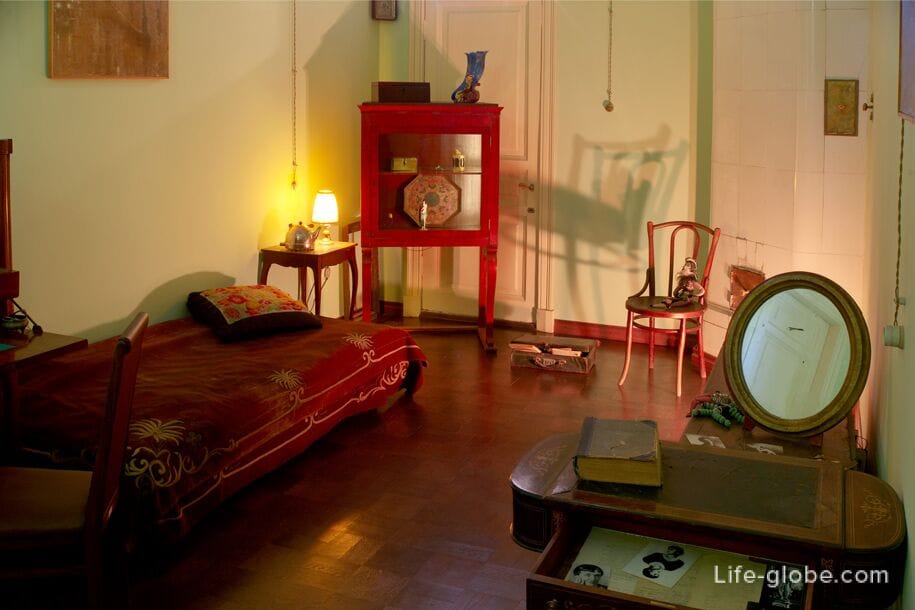
Anna Akhmatova's room, 1945.
"The room was very sparsely furnished, apparently, almost everything that used to stand in it disappeared during the blockade," Isaiah Berlin remembered this room.
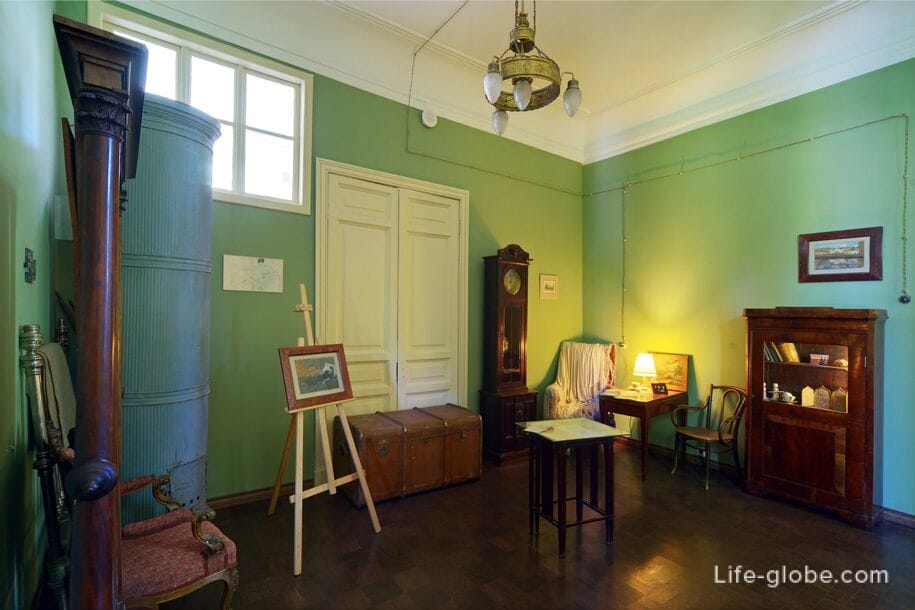
The museum also presents the exhibition "The American Cabinet of Joseph Brodsky", based on the things that were given by the poet's widow Maria Sozzani-Brodskaya from the town of South Hedley, where Brodsky lived and taught since the early 1980s.
Joseph Brodsky has never lived in the Fountain House and has never even been in it. But he had known Anna Akhmatova since 1961.
Gratitude, humility and forgiveness are the main lessons that, according to Brodsky, communication with Anna Akhmatova gave him.
The cabinet presented in the museum is a kind of model of the poet's consciousness, reflecting the way of life, regardless of where in the world he is located. Two layers of time are connected in the study - the end of the 1980s, when Brodsky was writing his essay "One and a Half Rooms" in America, and the mid-1960s, which are discussed in this essay.
On the matte sheets covering the wall, the faces of the parents are depicted; the father's last letter asking him to allow him to visit his son in America. For twelve years, Brodsky sent his parents invitations to travel to America, and all these years they received a paper marked "inappropriate"in response to applications. They died without knowing that their son had won the Nobel Prize.


The so-called "White Hall" in the museum is a room where the literary exposition of Anna Akhmatova's poetry is located.
The hall is conditionally divided into seven installations, each of which is marked with the text of a particular "Northern Elegy" by Akhmatova, that is, with lines of her poetic biography. In front of them, behind the glass, there are things, manuscripts, drawings and photographs.
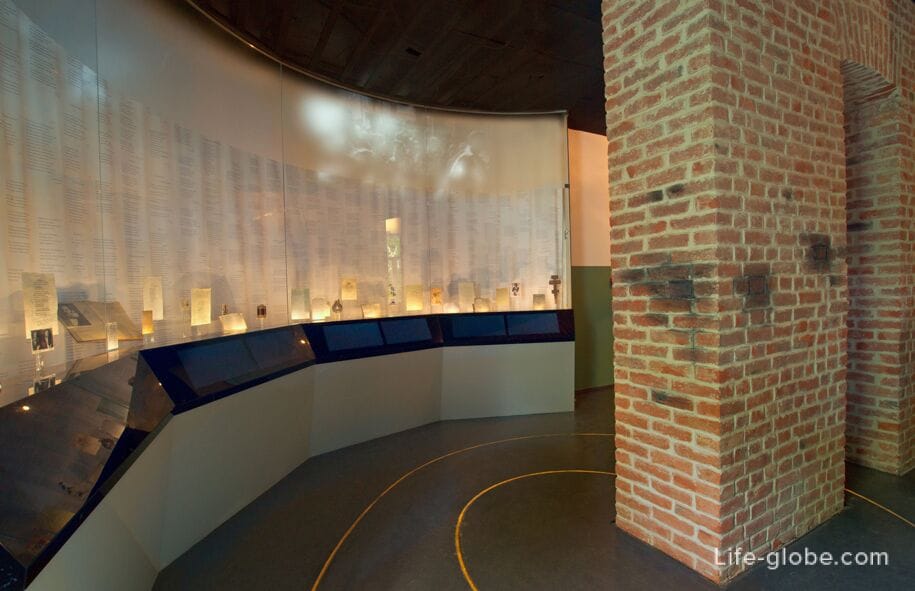
The Anna Akhmatova Museum in the Fountain House is located in the center of St. Petersburg, at the address: Fontanka River Embankment, house 34. The entrance to the museum is from Liteyny Prospekt, through the arch of house 53.
Nearest metro stations: "Mayakovskaya", "Vosstaniya Square", "Gostiny Dvor" and "Nevsky Prospekt".
Entrance to the museum is paid. Tickets can be purchased at the ticket office or in advance-online on the official website of the museum.
All information about the museum: expositions, opening hours, purchase and cost of tickets, excursions, etc., we recommend checking on the official website of the museum: akhmatova. spb.
You can also visit the Anna Akhmatova Museum in the Fountain House with an excursion
All accommodation facilities in St. Petersburg, including in the city center and more remotely from it, can be viewed and booked here